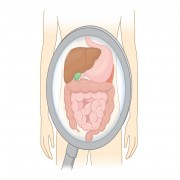Diagnostic tool turns into therapeutic procedure
Endoscopic retrograde cholangiopancreatography (ERCP) used to be a means to detect bile and pancreatic duct blockages, now it is used to treat them

The bile and pancreatic ducts play important roles in the process of digestion. Sometimes an obstruction can form in these ducts, however, requiring the patient to undergo endoscopic retrograde cholangiopancreatography (ERCP).
“Endoscopy is the visual examination of the internal organs using an endoscope. The main uses for endoscopy are to examine the inside lining of the stomach and large intestine,” said Dr Chua Tju Siang, a gastroenterologist at Mount Elizabeth Hospital in Singapore.
“ERCP is an advanced endoscopic procedure that uses a special type of endoscope in combination with X-rays to view the bile duct and pancreatic duct. It is often first-line treatment for bile duct obstruction and can be done in most patients.”
A yellow-green liquid produced by the liver, bile helps break down fat into microscopic droplets which can be more easily digested.
When we are not eating, the bile that is produced is stored in the gallbladder. When we eat a fatty meal, the gallbladder contracts and expels the bile into the small intestine via the bile duct. It most commonly gets blocked by gallstones.
Though it was once widely used as a diagnostic procedure, ERCP is now mainly done therapeutically to remove stones or insert stents to relieve obstruction of the bile or pancreatic ducts.
“Endoscopic ultrasound has replaced it for scanning as it can visualise the bile duct and pancreatic duct system without the risks ERCP carries. Endoscopic ultrasound can detect abnormalities, such as the presence of small bile duct stones, bile duct tumours, small pancreatic tumours and pancreatic cysts,” said Dr Chua.
During ERCP, which is performed only by doctors who have undergone specific training, an instrument called endoscope will be passed down the patient’s throat into the duodenum, the first part of the small intestine. A catheter, or small tube, is then threaded through the duodenum until it reaches either the bile or the pancreatic duct as required. X-rays will be taken to determine the position of the catheter and dye is usually injected to examine the duct.
In some cases, a cut is made to widen the opening at the duodenum to enable removal of a large stone. If a stone in the bile duct needs to be removed, a basket may be used to catch it and pull it out of the bile duct. For small stones, a balloon can be used to trawl the stones out of the bile duct.
The length of the examination varies between 30 and 90 minutes, and usually lasts an hour.
Following ERCP, patients continue to be monitored while the sedatives wears off. They may feel a little bloated as a result of air having been introduced into the digestive tract during the ERCP. Some may have mild throat discomfort.
Post-ERCP pancreatitis (PEP) is the most common adverse event of ERCP, with a typically quoted risk of about six to seven percent. It is therefore important that the reason for performing ERCP and its potential benefits are clearly explained to the patient.
The skills and experience of the endoscopist usually play a role in reducing the risk of PEP. The placement of a pancreatic stent in high-risk cases can reduce the risk of PEP. Administering a rectal non-steroidal anti-inflammatory drug after the procedure has also been shown to reduce the risk of the condition.
Other potential complications include significant bleeding, in 0.5-2 percent of cases and perforation in less than one percent. If the biliary system is not completely drained the procedure may lead to infections.
Dr Chua Tju Siang has practiced medicine since 1995 and specialises in gastroenterology at Mount Elizabeth Hospitals in Singapore. He sub-specialises in the field of interventional endoscopy, including therapeutic endoscopy, ERCP and endoscopic ultrasonography.
Related Articles
Why do patients see a gastroenterologist?
Dr Tan Chi Chiu discusses the gastrointestinal symptoms patients usually present with
Read moreWhy do patients develop reflux?
Dr Tan Chi Chiu looks at the symptoms and causes of gastroesophageal reflux disease
Read moreWhat you need to know about heartburn
Professor Benjamin C.Y Wong answers some common questions on heartburn
Read moreLatest Articles
Medical Care
Clinical Exercise Physiologist (CEP): The Emerging of Exercise is Medicine
How Exercising can be a Medicine
Read moreMedical Care
Reversing type 2 Diabetes: Embracing Hope and Determination
Experience the remarkable journey of Ash and his grandfather Atok as they conquer type 2 diabetes through unconventional methods, showcasing the power of love and determination over adversity.
Read moreMedical Care
Bladder Cancer: What You Need to Know
Empower yourself with our comprehensive guide to bladder cancer. Explore symptoms, diagnosis, treatments, and supportive resources to safeguard your health.
Read more